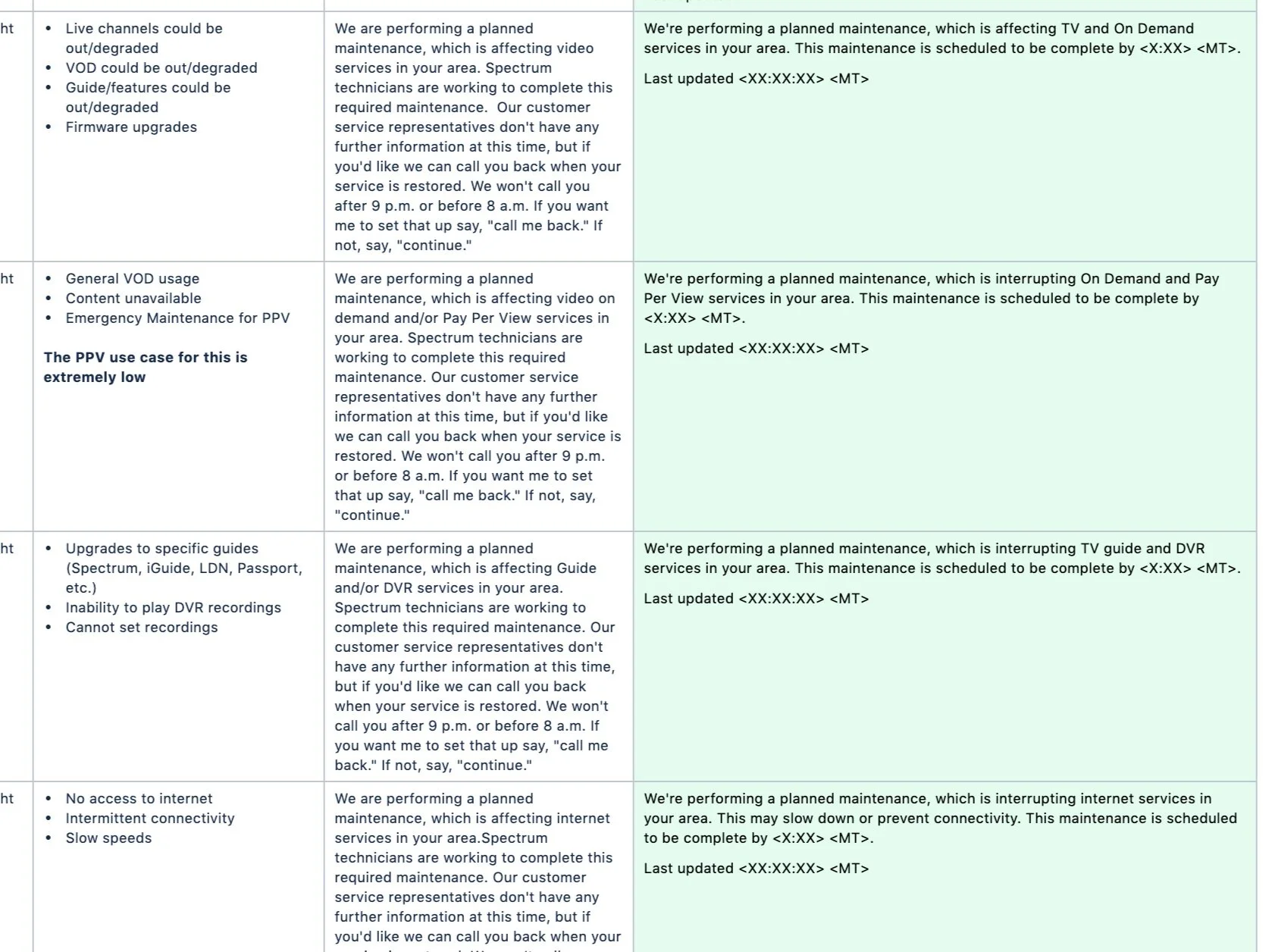Outage Notifications
The Problem
Service outages are one of the primary reasons that customers call the help center at Charter Communications. As a Fortune 80 company and one of the nation’s largest ISPs, reducing the volume of calls associated with outages became an important project for my team.
The Process
I partnered with both customer operations and business stakeholders to determine different outage types. I then worked with dev partners, data analytics, and design architecture to gather existing content that was being surfaced in the app and on the website. I built a matrix to capture different use cases and included call center scripts for each type of outage. Despite different scripted responses from call center reps, Charter’s app, My Spectrum, and website used a single, generic message. It was my hypothesis as a content designer that a more targeted set of specific messages, including the option to request a call when the outage was complete, would drive down the volume of calls regarding outages. Another critical inclusion that I identified was the affordance of an estimated time of resolution.
First page of outage notifications document for the My Spectrum app. The new app copy I wrote is located in the green column.
Messaging “Source of Truth”:
I built a content deck of a messaging matrix that included outage id, description, and the call center response script when dealing with calls related to each outage. After working with customer ops and development teams, I identified over 70 types outages. I wrote specific notifications for the app in the green column.
Targeted Alerts:
I leveraged analytics, benchmarking, and user research to identify the most critical info that users want to know in the event of an outage. I then built and standardized a messaging structure that informs users when an outage has been reported, what services are affected (if this info can be detected), and when it will be fixed.
Planned maintenance outages, with detail disclosure including services affected and estimated time of repair.
Planned Outages:
Scheduled outages performed for network maintenance allow more specific messaging, such as the individual services that are affected.
Pay Per View Outages:
During the discovery stage of this project, I learned that pay per view outages feature the highest percentage of support calls. The messaging that I wrote for pay per view outages includes affordances for specific service details, such as event start times.
The Solution
Surfacing more customized outage banner alerts and in-app modals is intended to drive down customer confusion and frustration during loss of service. The ultimate goal of driving down support calls and increasing customer satisfaction is yet to be proven, but preliminary user testing indicated a strong increase in both comprehension and preference when compared with the existing, generic message solution.



